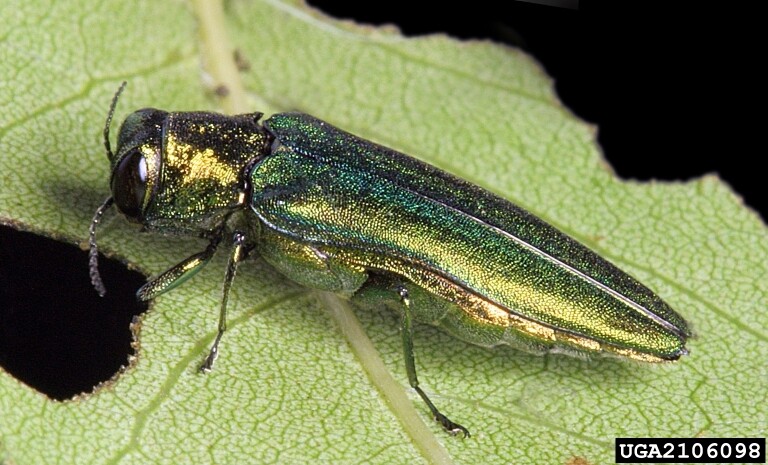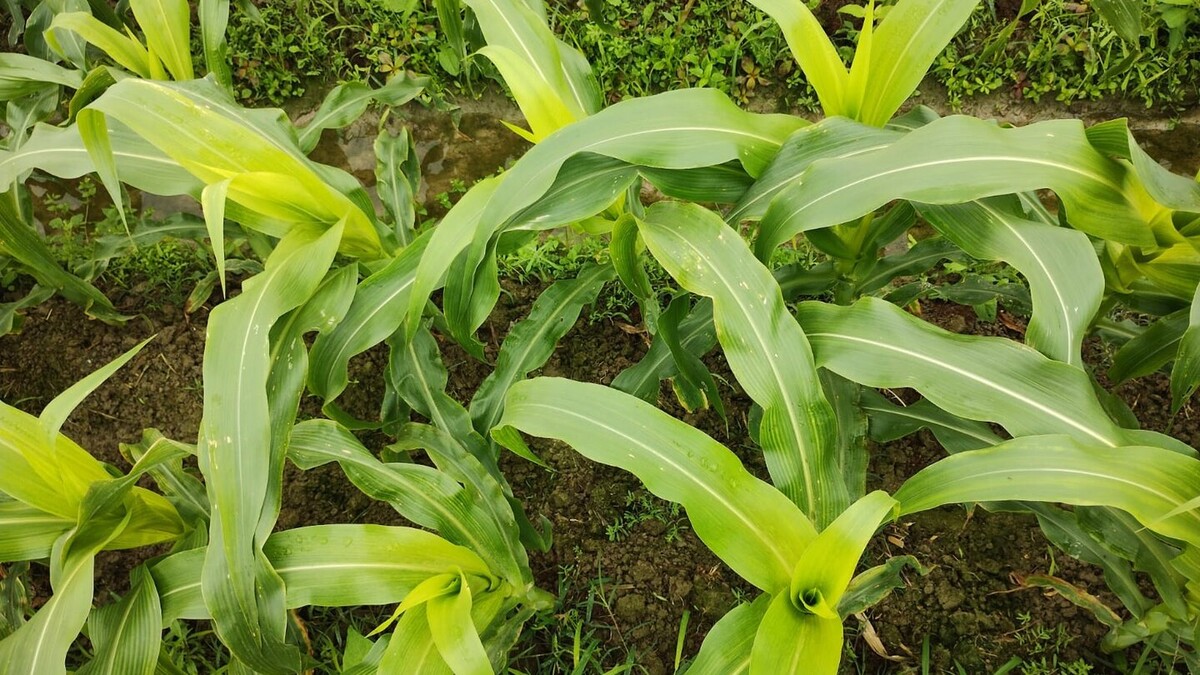
Simply Trees — March 2014
Emerald ash borer is a tiny green insect that is likely to destroy most of our beautiful ash trees. It has been found in neighboring states but hasn't been detected in Nebraska yet. Many homeowners are asking what they can or should do to prepare.
Nebraska's multi-agency EAB working group and other tree care professionals are on the lookout for EAB, and surveys for EAB are conducted every year. When EAB is confirmed in Nebraska, workshops will be held to provide guidance to homeowners.
Until then, homeowners can evaluate their ash trees to determine if they are good candidates for future treatments. High-value, healthy trees that are properly sited are worth consideration. Trees with extensive branch dieback, hollow or decayed wood or ones growing too close to buildings, sidewalks or electrical lines should be removed rather than treated for EAB.
Trees provide a great range of benefits, including shade, improved air quality and beauty for homes. They can have a dramatic impact on a home landscape, and decisions about treatment vs. removal are difficult. An ash tree with a 20-inch trunk, for instance, provides an estimated $200 in economic value to a home every year. From a financial standpoint, that can be compared with the yearly cost of treating a tree for EAB, which is about $100 for treatment plus labor. On the other hand is the cost of not treating, in which case EAB likely will kill untreated trees, and cost for removal may exceed $1,000.
Should homeowners treat their trees? The treatments that are feasible have drawbacks. The most common treatment available to homeowners is a soil application in which insecticide is picked up through the roots and carried throughout the tree to kill feeding insects. But flowers or shrubs growing near the tree can easily pick up the chemical too, exposing bees, butterflies and other pollinators to the chemical. The impact of an entire community doing such treatments would be significant and far-reaching.
For homeowners who decide to pursue treatment, the EAB working group doesn't recommend treating until the pest is known to be within 15 miles of the trees. Currently the nearest infestations are in the Kansas City area, in Creston, Iowa, and in Boulder, Colo. – 65 miles or more from Nebraska's borders. Treating trees at this time is not likely to justify the cost, health risk, environmental effects and tree injury that the treatments cause.
Homeowners may treat small trees successfully, but large trees should be handled by professionals, who have a wider range of treatment options. These include trunk injections, which place the insecticide within the tree to help limit the effects on non-target organisms. Injections, however, cause some damage to trees. Most are applied by drilling holes in the trunk and they vary in the amount and toxicity of the product applied.
Because of EAB's aggressive nature, trees that homeowners are attempting to save likely will require treatments for their entire life. For homeowners who don't want to make that long-term commitment, the best thing to do is to plant trees to replace the ones likely to die.
And far into the future a glimmer of hope shines. In areas already devastated by EAB, a rare tree here and there is still alive and healthy. Perhaps these "lingering ash" will one day be the genetic source of naturally resistant trees, keeping this beautiful species a part of neighborhoods and communities.
More on EAB can be found at nfs.unl.edu/eab.
Laurie StepanekNebraska Forest Service
402-472-5503
lstepanek2@unl.edu
Dan Moser
IANR News Service
402-472-3030
dmoser3@unl.edu
Click here for larger image







